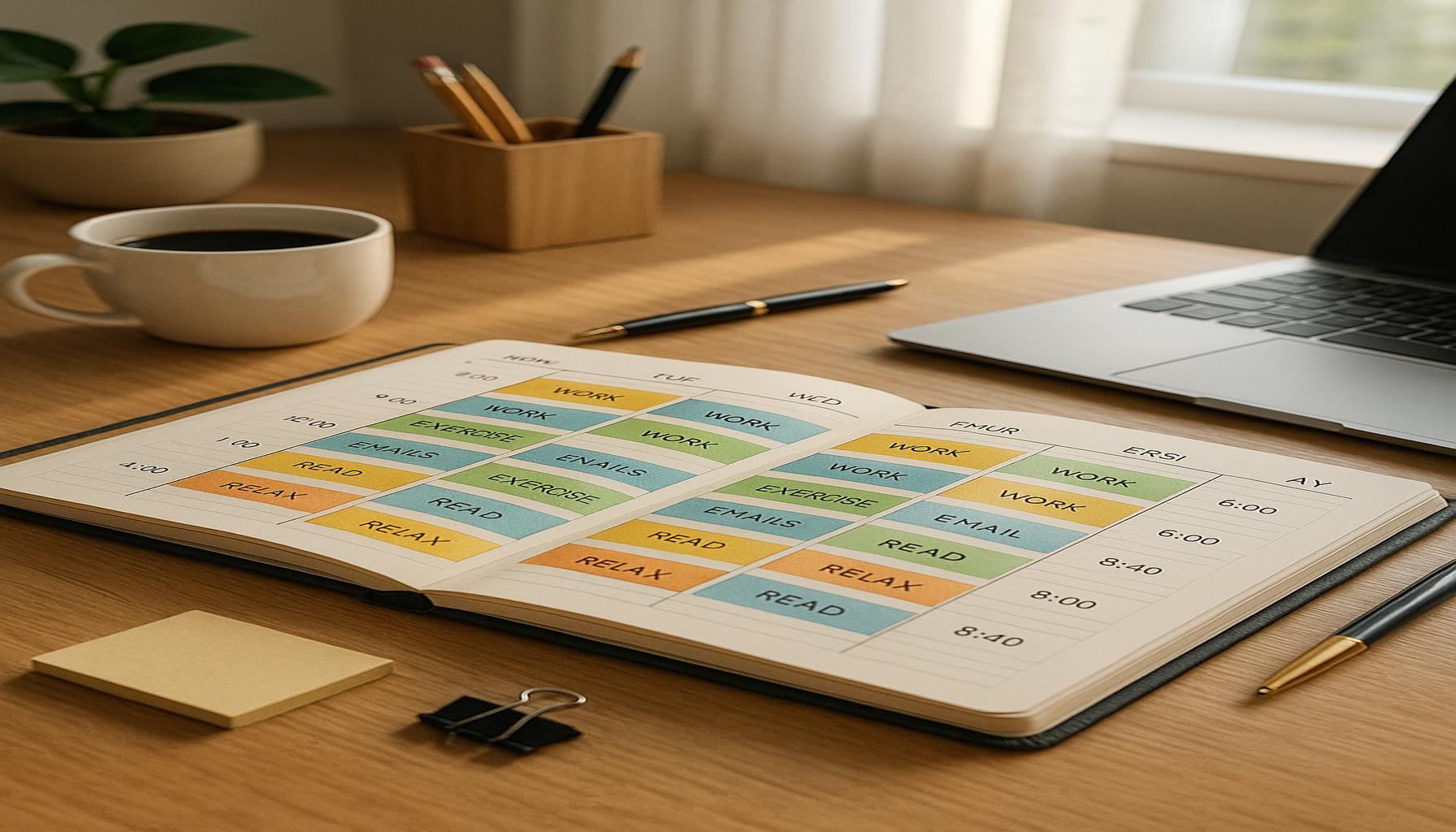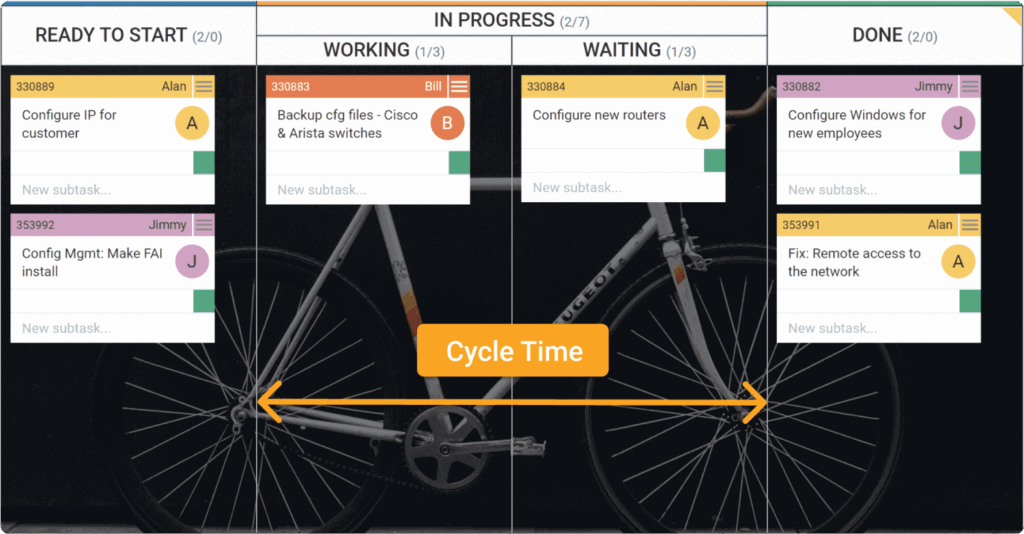Time Blocking: Structuring Your Day for Success

Unlocking Productivity with Time Blocking
In a world filled with distractions, finding a method to boost productivity is essential. One effective approach gaining traction is time blocking. This technique empowers individuals to structure their day efficiently by dedicating specific chunks of time to distinct tasks.
Time blocking helps you:
- Manage distractions: By scheduling focused work periods, you can minimize interruptions. For instance, if you dedicate a two-hour block solely for project development, you can turn off notifications on your phone and computer, creating an environment conducive to deep work.
- Prioritize tasks: Allocating time for high-impact activities ensures that the most critical tasks receive your attention when you are most alert. A morning block might be perfect for tackling creative writing or strategic planning, while administrative duties could be managed post-lunch.
- Enhance accountability: By creating a commitment to stay on track during your designated blocks, you cultivate a stronger sense of responsibility. Sharing your time-blocked schedule with colleagues can also deepen this accountability, as they are aware of your availability.
Whether you’re a busy professional or a student balancing classes and assignments, implementing time blocking can lead to significant improvements in your daily workflow. Studies show that those who actively manage their time report feeling more accomplished and less stressed; a survey by the American Psychological Association found that time management skills significantly reduce anxiety levels in students.
Curious about how to get started with time blocking? Here are some key elements to consider:
- Identify tasks: Begin by listing your daily responsibilities and categorizing them into urgent, important, or less significant tasks. This will help you to visualize where your focus should lie.
- Set time limits: Determine how long each task should take. Research suggests that people tend to work more efficiently when they are aware of a deadline, even a self-imposed one. For example, you could allocate 30 minutes for reading emails and an hour for project planning.
- Use a planner: Whether it’s a traditional planner, a digital calendar, or a time management app, keeping a visual schedule to track your blocks can be beneficial. Tools like Google Calendar or Notion can allow you to color-code different types of tasks, providing a quick visual cue to your day’s structure.
By embracing time blocking, you open the door to effective time management strategies tailored for your unique demands. Many successful leaders and experts endorse this practice as a way to streamline workflows and enhance focus. In the following sections, we will explore how to implement this approach for ultimate success, introducing tips and tools that can elevate your time management game.

Getting Started with Time Blocking
Implementing time blocking in your daily routine requires a shift in mindset and a few practical steps that can significantly enhance your productivity. Unlike traditional to-do lists that often lead to overwhelming feelings and vague progress, time blocking offers a structured approach, allowing you to break down your day into manageable segments designed to focus on specific tasks. Here’s how you can embark on your time blocking journey effectively:
Select Your Tools
The first step towards successful time blocking is choosing the right tools. Whether you prefer a physical planner, a digital calendar, or even specialized time management software, finding a platform that suits your style is essential. Popular options include:
- Google Calendar: Accessible on multiple devices, Google Calendar allows users to color-code events, making it easier to differentiate between work tasks, personal commitments, and meetings.
- Notion: This versatile app combines to-do lists, calendars, and databases, allowing you to tailor your time blocks in a visually appealing way.
- Todoist: While primarily a task manager, Todoist can also be used to create time-blocked schedules by adding due times to specific tasks.
Establish Your Core Time Blocks
Your next step involves identifying key time blocks in your day. Analyze your energy levels throughout the day; many people find they are most productive during the morning hours. This self-awareness will guide you in scheduling the most challenging and significant tasks when you are at your peak productivity. Consider using the following guidelines to establish your core time blocks:
- Morning Blocks: Utilize this time for high-concentration tasks requiring creativity, such as writing, brainstorming, or strategic planning.
- Midday Blocks: After a packed morning, focus on collaborative tasks like meetings or discussions where communication flows more easily.
- Afternoon Blocks: Reserve this time for less intensive tasks such as emails, administrative work, or reviewing your day’s accomplishments.
Set Boundaries and Allow Flexibility
While it is important to adhere to your planned time blocks, flexibility within this structure is also crucial. Unexpected interruptions can arise, so be prepared to adjust your blocks accordingly without devolving into chaos. Set boundaries by creating a dedicated workspace and informing others of your time-blocking schedule to minimize distractions. For instance, you might communicate your ‘do not disturb’ hours to coworkers, family members, or roommates to create an environment that respects your focused work periods.
Incorporating time blocking into your daily routine marks the beginning of a transformative process. This method not only enhances productivity but also promotes mental clarity and work-life balance. As you create a customized schedule that fits your unique needs, you’ll find that the benefits of structured time management can significantly elevate your overall success. In the next section, we will delve deeper into advanced time blocking strategies, equipping you with additional tools and techniques to master this effective productivity approach.
| Category | Description |
|---|---|
| Increased Productivity | By segmenting your day into focused blocks, you can achieve more in less time. |
| Enhanced Focus | Time blocking minimizes distractions, allowing you to dive deep into tasks without interruptions. |
When applying the time blocking technique, individuals often report a remarkable boost in their overall efficiency. The magic lies in the deliberate allocation of time for specific tasks, which encourages a focused approach to work and minimizes procrastination. Many find that this system fosters a sense of urgency, transforming the way tasks are perceived.Moreover, the structured nature of time blocking can pave the way for improved mental clarity. This method encourages individuals to prioritize their responsibilities and set realistic timelines, thereby managing workload more effectively. By breaking down large projects into manageable segments, one can easily track progress and maintain motivation throughout the day.Those who embrace this approach not only manage their time better but also cultivate a proactive mindset, ultimately steering them toward greater success. Exploring more about how time blocking works can lead to a personalized system that suits individual needs, enhancing both personal and professional life.
Advanced Strategies to Enhance Your Time Blocking
Once you’ve grasped the basic principles of time blocking, consider incorporating advanced strategies to further refine your approach and boost efficiency. As with any productivity method, evolution leads to improvement; understanding these nuanced techniques can be the catalyst for maximizing your potential.
Utilize the Pomodoro Technique
One effective strategy to pair with time blocking is the Pomodoro Technique. This popular time management method encourages you to work in focused sprints, typically lasting 25 minutes, followed by a 5-minute break. After completing four Pomodoros, you can take a longer break of 15 to 30 minutes. This technique prevents burnout while ensuring you maintain optimal concentration levels. Integrating Pomodoros into your time blocks can not only enhance productivity but also help refresh your mind regularly throughout the day.
Review and Adjust Regularly
Regularly reviewing your blocked time is crucial for continuous improvement. At the end of each week, take a moment to assess your performance during your time blocks. Ask yourself questions like: Were there tasks that consistently went over time? Did certain blocks feel unmanageable? What worked, and what didn’t? This reflective practice can inform future planning, allowing you to adjust your strategy according to what you learn about your work habits over time. A structured review enhances accountability and clarifies areas for improvement.
Segmenting Your Tasks
Another advanced technique to consider is task segmentation. Within your time blocks, break large tasks into smaller, more achievable subtasks. For instance, if you’re working on a presentation, your time block could include separate segments for research, designing slides, and final rehearsals. This nested approach not only mitigates overwhelm but also propels a sense of accomplishment as you check off smaller items along the way. Using this method enables a more realistic allocation of time, which can significantly improve your efficiency in task completion.
Time Blocking for Long-Term Projects
When working on long-term projects, consider establishing dedicated time blocks each week specifically for these initiatives. Whether it’s writing a book, preparing for a certification exam, or deploying a marketing campaign, ensure that you have consistent blocks set aside exclusively for these larger tasks. By treating long-term projects with the same seriousness as daily operations, you can make steady progress and avoid the stress of last-minute scrambles. For example, if you dedicate every Tuesday afternoon to a major project, it becomes a non-negotiable commitment that can consistently move you towards your goals.
Incorporate Downtime and Self-Care
Lastly, remember to incorporate time for self-care and downtime within your time blocks. It’s essential to include restorative activities, such as exercise, meditation, or leisure reading, in your schedule. This isn’t merely about maintaining a work-life balance; studies show that downtime can lead to enhanced creativity, better problem-solving, and improved overall performance. Scheduling regular breaks, enjoying a hobby, or spending quality time with loved ones can recharge your mental batteries and ultimately lead to greater productivity during work blocks.
By adopting these advanced strategies in your time blocking routine, you can create a more nuanced and efficient scheduling system geared toward your long-term success. With careful implementation and regular adjustments, you are well on your way to mastering time blocking and unlocking your full potential.
Conclusion: Embracing Time Blocking for a Productive Future
As we navigate the complexities of modern life, time blocking emerges as a powerful tool for achieving personal and professional success. By methodically structuring your day, you pave the way for enhanced focus, increased productivity, and greater fulfillment in your endeavors. The integration of advanced strategies, such as the Pomodoro Technique, task segmentation, and dedicated time for self-care, can further amplify the effectiveness of your time blocking system, ultimately propelling you toward your goals.
Regular reflection on your time blocks not only elevates accountability but also ensures that your workflow continually adapts to your needs. By recognizing what works and what doesn’t, you position yourself to adjust your approach for optimal results. Furthermore, by embracing a holistic view of time management—one that includes dedicated hours for long-term projects alongside essential downtime—you cultivate a sustainable productivity routine that balances commitment with well-being.
In essence, time blocking is more than a method; it’s a mindset shift that challenges you to take control of your day. As you begin to experience its benefits, you may find new levels of creativity and efficiency emerging alongside unexpected satisfaction in your work. As you consider implementing these practices into your daily life, remember that the journey of mastering time blocking is ongoing. Equip yourself with the right tools, stay committed to regular reviews, and watch as you unlock your potential, paving the way for a more organized and successful future.
Related posts:
Batch Processing: Grouping Similar Tasks to Save Time
5 Science-Based Productivity Methods to Manage Your Time Effectively
Boost Remote Productivity Discover the Pomodoro Technique Benefits
The Two-Minute Rule: Addressing Small Tasks Right Away
Leveraging Technology: Apps and Tools for Better Time Management
Getting Things Done (GTD): A Comprehensive Approach to Task Management

Linda Carter is a writer and time management specialist who helps professionals optimize their schedules and maximize productivity. With extensive experience in efficiency techniques and work-life balance strategies, she shares practical time management methods on our platform. Her goal is to empower readers with actionable systems to take control of their time, reduce stress, and achieve both professional and personal goals.